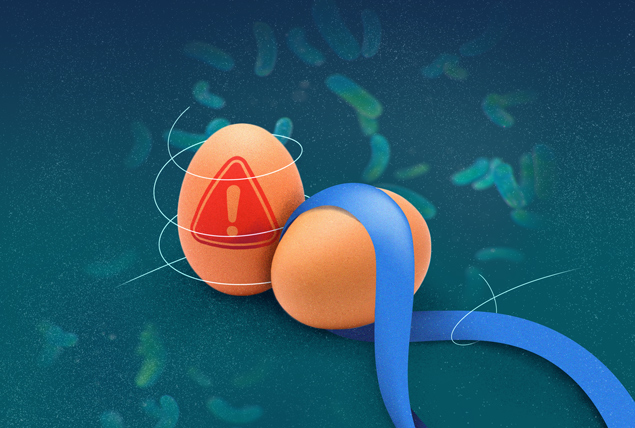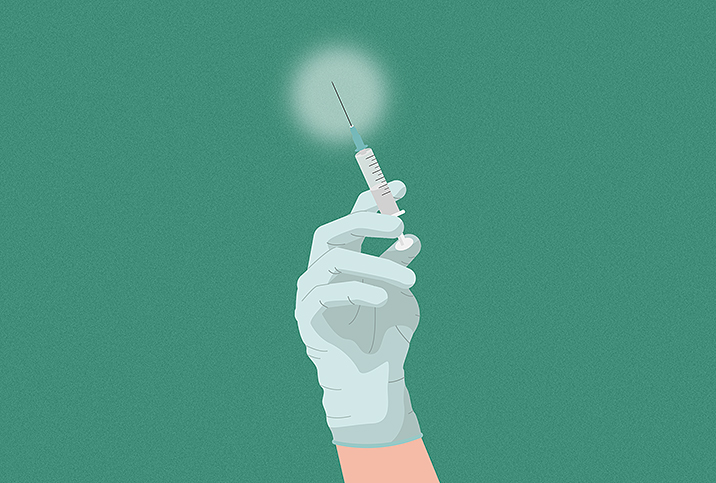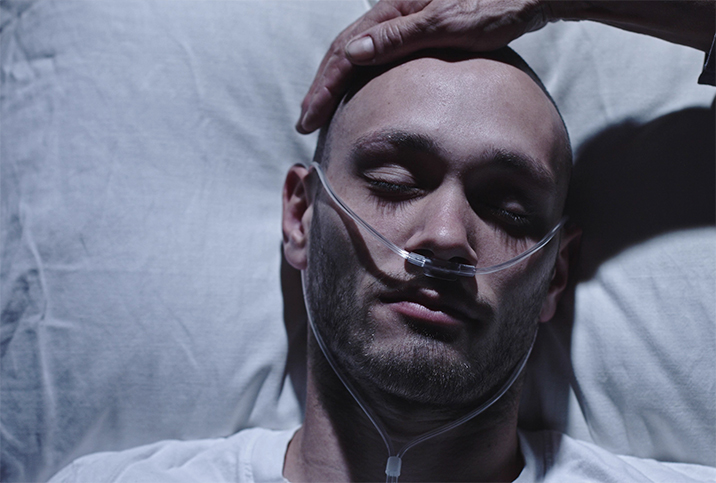Duran Duran's Andy Taylor Is Battling Stage IV Prostate Cancer

Duran Duran, the popular British band that rose to prominence in the 1980s, announced that former guitarist Andy Taylor is battling stage IV prostate cancer.
The band made the announcement Nov. 5 during its induction into the Rock and Roll Hall of Fame. Bandmates revealed Taylor's diagnosis in a speech during the ceremony, and Taylor posted a note on Duran Duran's website.
"Although my current condition is not immediately life threatening, there is no cure," Taylor wrote. "Recently, I was doing okay after some very sophisticated life-extending treatment, that was until a week or so ago when I suffered a setback, and despite the exceptional efforts of my team, I had to be honest in that both physically and mentally, I would be pushing my boundaries."
Taylor was diagnosed four years ago with stage IV metastatic prostate cancer, meaning the disease had spread to distant parts of his body. Neither the band's nor Taylor's statements included further details.
Treatment for stage IV prostate cancer is difficult since the disease has spread; the five-year relative survival rate for this stage is 28 percent.
Prostate cancer overview
Prostate cancer is the second most common cancer among American men. About 1 in 8 men are diagnosed with the disease during their lifetime. That's just one of a few sobering facts:
- It's estimated that more than 268,000 new diagnoses of prostate cancer will be made in 2022 and about 34,500 men will die from the disease, according to the American Cancer Society.
- Prostate cancer is the second-leading cause of cancer death among American men, trailing lung cancer.
- About 1 in 41 men die from prostate cancer.
Prostate cancer risk factors
Five of the most common risk factors for the disease include:
- Age
- A family history of the disease
- Race and ethnicity (African American men have the highest rate of developing prostate cancer and are more likely to die from it.)
- A poor diet
- Obesity
No strategy has been proved to prevent prostate cancer. However, taking steps to avoid the risk factors could reduce your chances of developing the disease.
Prostate cancer symptoms
Treating prostate cancer can be difficult because it can present without symptoms until it has spread beyond nearby lymph nodes. This fact makes early and regular screenings vital.
Some symptoms that may arise can mimic other conditions, such as prostatitis, but are nevertheless important to look for:
- Persistent pain in your pelvis, back or hips
- Bloody urine or semen
- Difficulty urinating
- Urinating frequently, especially during the night
- Inability to empty your bladder
- Urine flow changes
- Pain when you ejaculate
- Inability to get an erection
- Rectal pain or pressure
Prostate cancer testing and diagnosis
The American Cancer Society recommends cancer screenings beginning at age 50, but states men should discuss the issue with their doctor before making a decision. The U.S. Preventive Services Task Force puts the initial screening age at 55. However, if you have a family history of the disease, it's advised you get screened earlier, starting at age 45.
"For diagnosis of prostate cancer, this usually consists of a blood test (called a prostate-specific antigen test), which should be obtained yearly in men from 55 to 70 (or potentially earlier if there is an early family history of prostate cancer), and confirmed with a prostate biopsy," said Majdee Islam, M.D., a urologist and men's health specialist at Urology of St. Louis, in an email conversation.
PSA is a protein produced by both cancerous and noncancerous tissue in the prostate gland. A small amount of PSA in your blood is normal. However, if the analysis finds high amounts, you may have prostate enlargement, inflammation, infection or cancer. PSA has seen its star rise and fall, but in conjunction with other tests, it remains a useful tool.
"There are also other tests, including imaging studies as well as other specific blood tests to assess for specifics about the prostate cancer," Islam added. "However, the confirmatory gold standard test to diagnose prostate cancer is the prostate biopsy."
If you are diagnosed with prostate cancer, the treatment options may include chemotherapy, targeted radiation therapy, focal therapy or surgery, depending on the stage and severity.
To get diagnosed and, if necessary, treated early, you need to get screened. If you don't have a relationship with a physician already, telehealth is a fairly new and expanding way to find and meet a doctor. Video visits can get things moving in the necessary direction. Physicians and therapists, too, have recognized the efficacy of video consultations. To make it easier to connect with a healthcare professional, Giddy telehealth offers a portal featuring same-day appointments and affordable care.
Prostate cancer prevention
There's no sure way to prevent prostate cancer. Certain lifestyle choices that promote general well-being can lower the risk, according to Mayo Clinic:
- Choose a healthy, low-fat diet. Some studies show avoiding excessive dairy products may also help.
- Eat more fruits and vegetables
- Maintain a healthy weight
- Exercise regularly
- Talk to a doctor about your family medical history and get the necessary screenings.
The five-year relative survival rate for all stages combined is 98 percent. However, the disease can show up without symptoms, which makes vigilance and screening imperative.
"Prostate cancer is a disease that, for many men, can be a devastating diagnosis to have, but often can be a treatable disease if caught early," Islam said.














